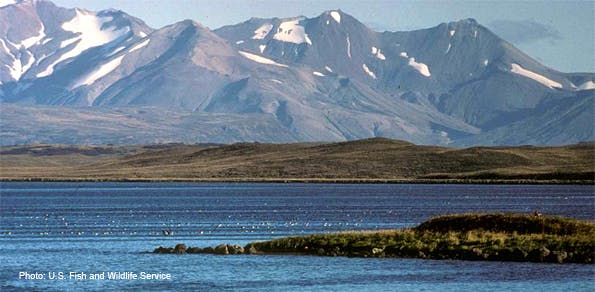Jamie Rappaport Clark, President & CEO
Bruce Babbit, former Secretary of the Interior
The true price of Sally Jewell’s confirmation as the new interior secretary is about to be revealed. Before agreeing not to fight Jewell’s nomination last month, Alaska Sen. Lisa Murkowski (R) extracted a commitment from the Interior Department to delay a decision on whether a road can be built to the southwest Alaska village of King Cove, population 950.
A few weeks ago, the U.S. Fish and Wildlife Service found that the road would severely damage the Izembek National Wildlife Refuge, a national treasure that is home to a vast array of creatures, including seals, salmon, caribou, bears and waterfowl. The senator was buying time in an effort to persuade the new secretary to go against the service’s findings and approve the road anyway. Now the final decision is pending — and more than wildlife is at stake. It is really the U.S. taxpayer who stands to lose if the road goes through.
The additional cost to federal taxpayers for building the road would be more than $33 million — a lot of money for one tiny village. And if it seems like you have heard this story before, that’s because you have.
In 1998, we were the interior secretary and director of the Fish and Wildlife Service, respectively, when the Izembek road proposal was earmarked in an appropriations bill headed for passage in Congress. But a lengthy scientific review determined that the road would devastate the Izembek refuge, so President Bill Clinton threatened a veto unless the earmark was removed.
Sen. Ted Stevens (R-Alaska), then chairman of the Appropriations Committee, rolled out his main argument: The residents of King Cove needed better access to an air strip in the event of medical emergencies requiring evacuation. In response, we suggested upgrading the existing ferry service from King Cove across Cold Bay to the air strip, which would avoid the need for a road through a wildlife refuge.
Stevens responded that an upgraded ferry would work, if we were prepared to also fund an upgrade of the existing marine terminals on the bay. We agreed. The senator then demanded an upgraded video teleconference link to a trauma facility in Anchorage. We agreed. Then he asked for a new ocean-worthy hovercraft capable of crossing the bay in any weather. We agreed to that as well. The final bill to the U.S. taxpayer? Over $50 million; more than $52,000 per resident of King Cove.
It was a huge price to pay to accommodate the rare medical emergencies of one small Alaska village, but accommodate them we did. Alaska got its taxpayer-funded medical emergency solution, and we helped ensure the survival of the Izembek Refuge. End of story.
Or so we thought.
Now the Alaska delegation is back, once again demanding a road through the refuge, as if the 1998 deal had never happened. That hovercraft purchased with taxpayer dollars? Despite a 100 percent success rate in carrying out more than 30 medical evacuations, local officials suspended service in 2010, saying the hovercraft was unreliable and too expensive to operate. But that hasn’t stopped them from using it to transport seasonal seafood workers from a nearby cannery.
Moreover, as Pete Mjos, the former medical director for the area, recently said, the proposed road would be impassable and even life-threatening during the region’s typical winter storms. Even in the best weather conditions, it would still be a two-hour trip. The hovercraft? Thirty minutes each way across the bay. And all without slicing through a pristine wilderness area with 21 miles of road, eight bridges, 19 culverts and 254 stream crossings.
Congress is on record calling for an end to earmarks for pork-barrel projects. And every day we hear more calls for spending cuts and belt-tightening. U.S. taxpayers have already chipped in more than enough for this project. Asking them to pay tens of millions on top of the more than $50 million they have already spent is asking too much. It’s time the Izembek road project was killed for good.
This letter was originally published in the Washington Post.






Follow Defenders of Wildlife
facebook bluesky twitter instagram youtube tiktok threads linkedin